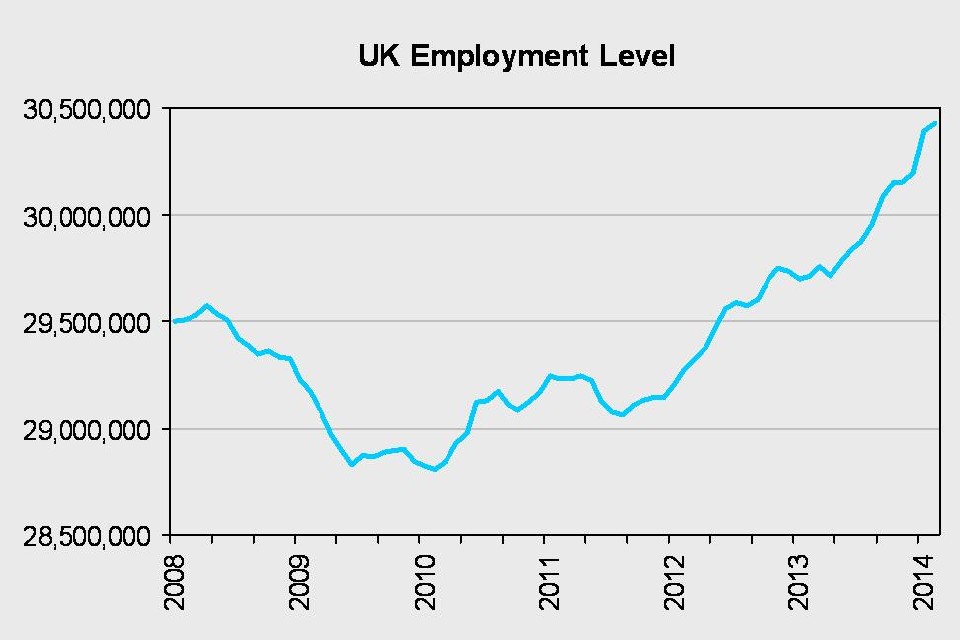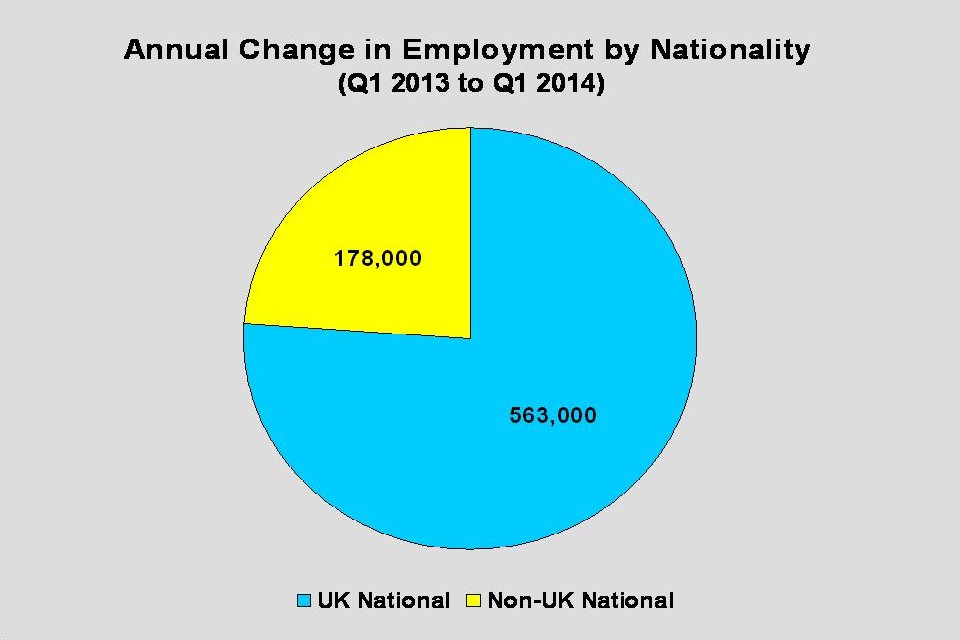Largest employment rise in over 4 decades
Employment has seen the largest quarterly rise since records began and the unemployment rate has fallen again to a new 5-year low.

Employment has seen the largest quarterly rise since records began over 40 years ago and the unemployment rate has fallen again to a new 5-year low, according to figures published by the Office for National Statistics (ONS) this morning.
The number of people in a job rose 283,000 in the last 3 months – the largest quarterly increase in 43 years. Employment increased by 722,000 on the year – almost the population of Leeds – meaning a record 30.43 million people are in work. Creating jobs and supporting enterprise as the economy grows are central to the government’s long-term plan to help hardworking people secure their future.
The number of unemployed young people fell by 48,000 in the last 3 months, and has been falling now for the last 8 months. Youth unemployment excluding those in full-time education is now at its lowest level since 2008.
Minister for Employment Esther McVey said:
As the recovery takes hold, more people are able to get a job or set up their own business and become the employers of tomorrow. Each and every person who has made a new start or hired someone new is helping to make Britain a more prosperous and confident place to be.
We will continue to support those in and out of work who want to get on and fulfil their ambitions for a more secure future.

This month’s figures also show that UK nationals made up over three-quarters of the rise in employment in the last year.

Unemployment fell by 133,000 in the last 3 months, with the unemployment rate falling again – down to 6.8% – the lowest it has been since early 2009. Long-term unemployment also fell, down by 32,000 in the last 3 months and down by 89,000 on year.
The number of people claiming Jobseeker’s Allowance (JSA) fell by 25,100 last month and is down 399,600 on year. The number of people claiming JSA for more than 12 months fell by 93,200 on the year – the largest annual fall since 1998. The number of young people claiming JSA has been falling for the last 23 months.
Job vacancies rose again, up 116,000 over the past year bringing the number of vacancies in the UK economy to 628,000.
Through our network of over 700 Jobcentres, work coaches up and down the country are successfully helping people to improve their skills and experience so they can move off benefits and into a job.
Background to labour market statistics: May 2014
This month’s Labour Force Survey covers January 2014 to March 2014. The claimant count is for April 2014 and the vacancy count for February 2014 to April 2014.
The number of people in work rose this quarter:
- 30.43 million people were in work in January to March 2014
- the employment level rose 283,000 on the previous quarter and 722,000 on the year
- the employment rate is 72.7%, up 0.6 points on the quarter and up 1.3 points on the year
International Labour Organization (ILO) unemployment fell this quarter:
- 2.21 million people were ILO unemployed in the January to March 2014 quarter, down 133,000 on the previous quarter and 309,000 on the year
- the ILO unemployment rate is 6.8%, down 0.4 points on the quarter and down 1.0 points on the year
The level of economic inactivity is down on the quarter and on the year:
- the economic inactivity level is 8.85 million in the January to March 2014 quarter, down 85,000 on the previous quarter and 155,000 on the year
- the economic inactivity rate is 21.9%, down 0.2 points on the quarter and down 0.5 points on the year
- excluding students, inactivity as a share of the 16 to 64 population is 16.3%, down 0.2 points on the quarter and down 0.5 points on the year
The number of people claiming one of the main out-of-work benefits is falling:
- claimant unemployment was 1.12 million in April 2014, down 25,100 on the month and down 399,600 on the year
- the claimant count rate is 3.3%, down 0.1 points on the month and down 1.2 points on the year
- in the year to November 2013, the number claiming incapacity benefits fell 43,600 to 2.46 million. The most recent provisional figure for March 2013 suggests the caseload has risen slightly since then
- in the year to November 2013, the number of lone parents on income support fell 25,000 to 485,000 – the provisional figure for March 2013 is 480,000
The number of redundancies rose and unfilled vacancies rose on the quarter:
- there were 126,000 redundancies in January to March 2014, up 15,000 on the previous quarter but down 14,000 on the year
- ONS’s vacancy survey estimates an average of 628,000 unfilled vacancies in the 3 months to April 2014, up 45,000 on the previous quarter and 116,000 on the year
Total weekly pay in March 2014 was up by 1.7% over the year and growth in regular weekly pay, excluding bonuses, was up by 1.3% on the year.
Universal Credit experimental statistics
The Universal Credit experimental statistics are also out today.
Contact Press Office
Media enquiries for this press release: 020 3267 5161
Press Office
Caxton House
Tothill Street
London
SW1H 9NA
Telephone: 0115 965 8781
Follow DWP on:
- Twitter – www.twitter.com/dwppressoffice
- Facebook – www.facebook.com/dwp
- LinkedIn – www.linkedin.com/company/dwp
- YouTube – www.youtube.com/dwp